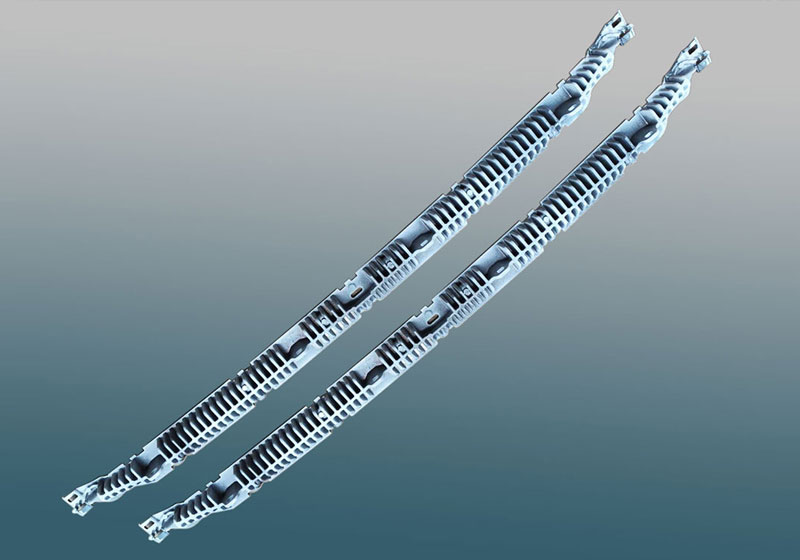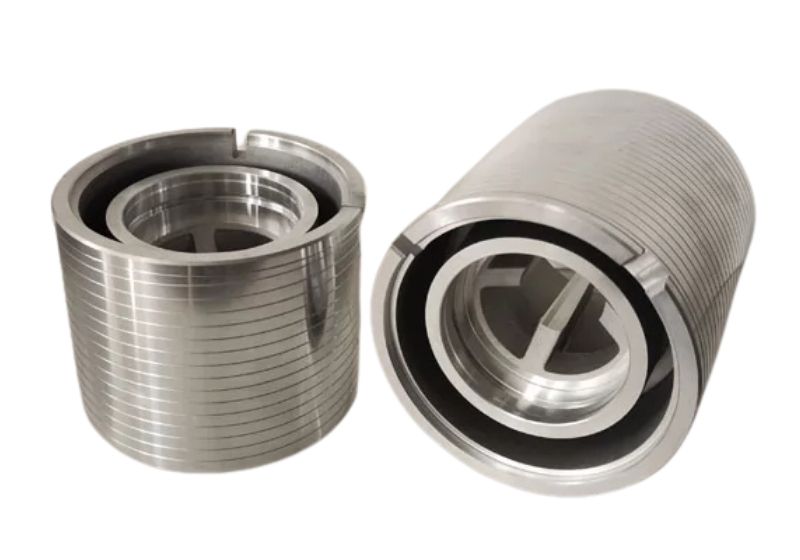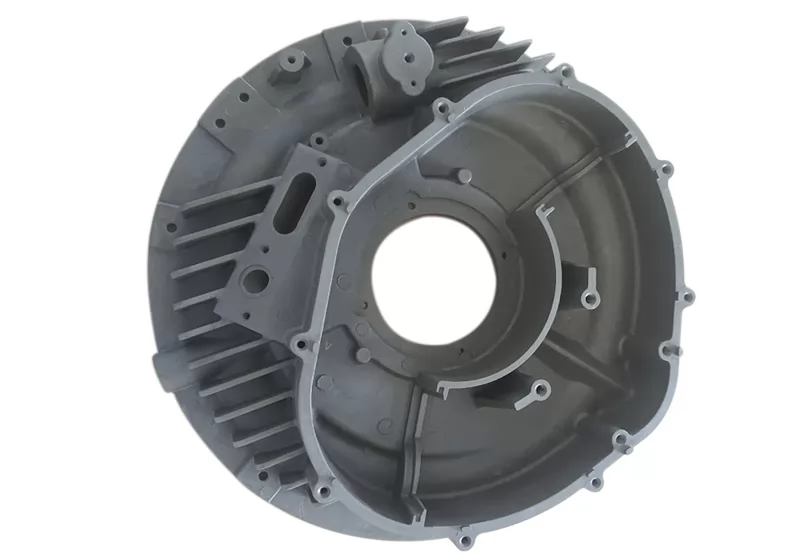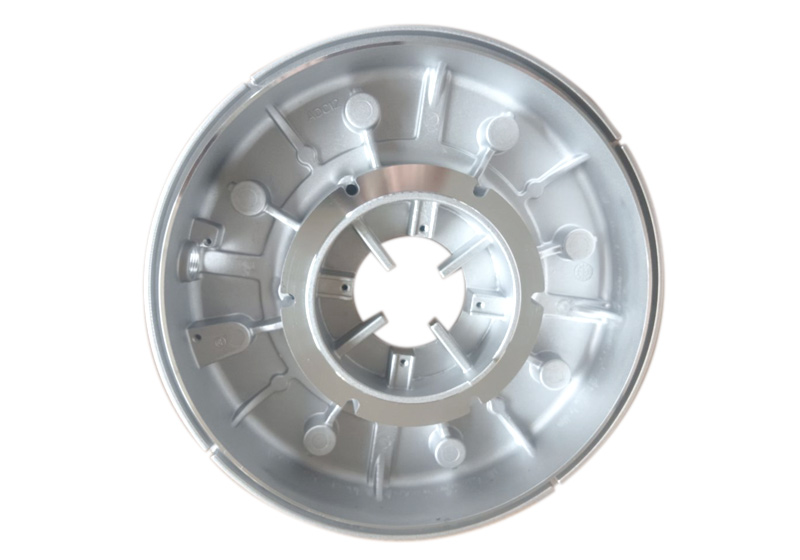| Parameter | Value |
|---|---|
| Part Name | Construction Machinery Work Light Housing |
| Material | ADC12 |
| Size | 234 × 167 × 82 mm |
| Weight | 1208g |
| Process | High pressure die casting + CNC machining |
| Surface Finish | Powder Coating |
| Min. Thickness | 3mm |
| Dimensional Tolerances | ISO 2768-mk |
| Surface Roughness | Ra 6.3µm |
| Application | Engineering equipment |
| Certification | IATF 16949-2016 |
This is a custom-designed LED work light housing for construction machinery lighting components, used in sectors such as mining, agriculture, and forestry. The LED housing not only protects the internal LED components but also serves multiple functions including thermal management and mechanical support.
1. Product Standards & Requirements: Material: ADC12; All dimensions must meet drawing tolerances (Grade ISO 2768-mK), including flatness 0.1, parallelism 0.1; Salt spray test: 240 hours; PPAP approval must be completed and passed before formal mass production.
2. Product Challenges: The heat sink surface of this construction machinery work light housing is covered with cooling fins of varying depths (max depth 60mm, thickness 3mm, spacing 12mm). The geometry leads to localized areas prone to carbon buildup and damages the mold core, placing high demands on die-casting parameters.
Risk Keywords: Casting control difficulty, Blank precision, Carbon buildup risk, Trial baking
The overall project presented a significant challenge, particularly testing our capabilities in mold design, handling of different processes, quality control, and delivery.
For this project, we formed a development team including mold designers, casting engineers, machining engineers, quality engineers, and sales. The team applied the core methodology of the internationally advanced IATF 16949 standard - Advanced Product Quality Planning (APQP), entering a comprehensive product development process focused on quality.
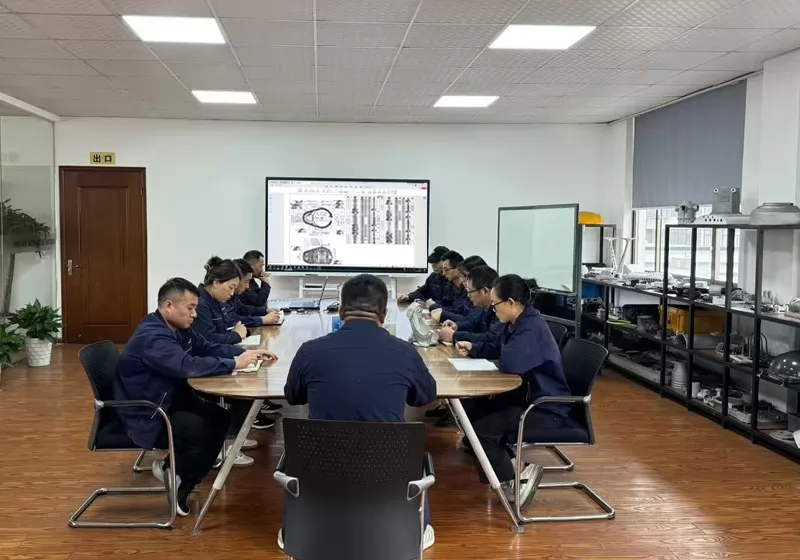
We began with DFM analysis to optimize certain structural details for enhanced manufacturability, establishing mutually agreed-upon technical specifications and quality standards with the customer.
Considering the application environment and performance requirements of this construction machinery work light housing, the material was confirmed as ADC12. Based on the material properties and the core design elements of the product, the process route of high-pressure die casting (HPDC) + CNC precision machining was ultimately determined, balancing technical feasibility, quality stability, and cost control. A 500T HPDC machine was selected with a 1-cavity mold.
Subsequently, technical engineers performed mold simulation and mold flow analysis to predict and optimize various challenges and process parameters, and established preliminary Process Flow Charts and Control Plans.
Finally, the plan was gradually validated, and issues were identified and resolved in the subsequent practical stages.
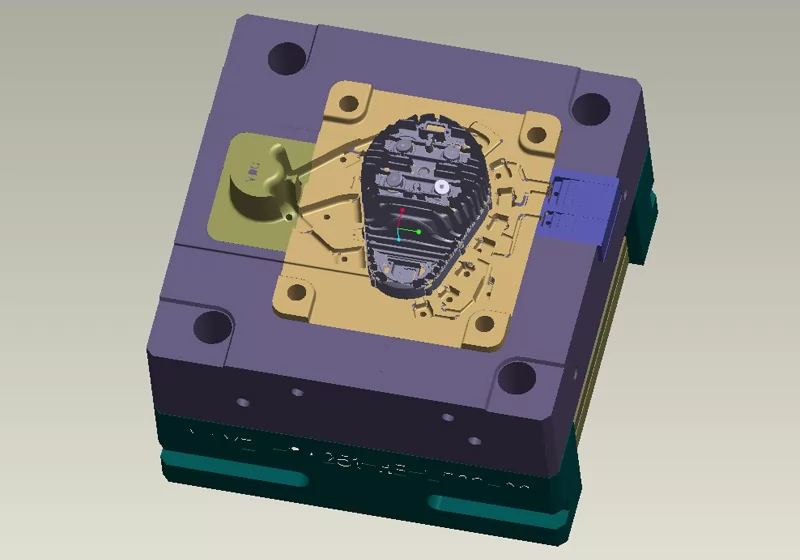
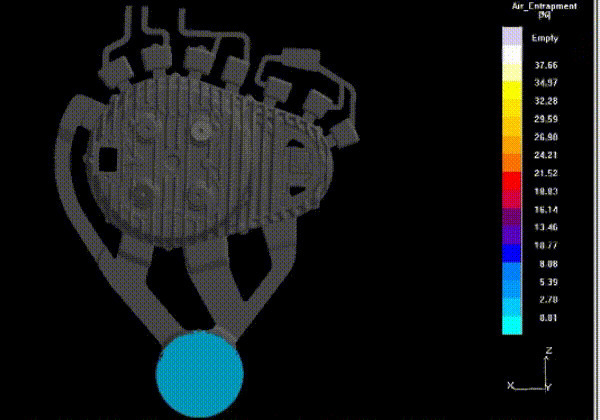
Starting from mold manufacturing, the project entered the actual production phase. Our company proceeded according to the initial Process Flow Chart, applied FMEA tools for risk analysis and assessment of various potential failure modes, and utilized Statistical Process Control (SPC) for core parameter data analysis, enabling continuous monitoring and improvement. The main key issues encountered during the actual manufacturing process were as follows:
During the design of the Construction Machinery Work Light housing, we anticipated that the dense and deep cooling fins would lead to carbon buildup at the fin roots, requiring frequent cleaning. For the first mold development, we initially followed traditional design requirements while aiming to minimize carbon buildup. However, during actual trial molds and sample production, carbon buildup persisted, necessitating frequent, which reduced efficiency and, more critically, risked damaging the mold core during cleaning. The development team conducted a technical review and decided to modify the mold by adopting a solution using movable inserts. The core of this solution was to make multiple carbon buildup-prone areas into movable inserts. After producing a certain number of parts, the corresponding inserts could be directly replaced. This method eliminated the hassle of cleaning the core and the risk of damaging it, significantly improving production efficiency.
For this Construction Machinery Work Light housing aluminum die-casting component, the fin thickness is relatively thin, making it prone to issues such as short shots, cold shuts, and burrs during the die-casting filling process. Our team repeatedly optimized the gate size and location during the mold flow analysis stage to enhance filling capability and prevent these issues. However, in post-molding processing, burrs cannot be completely avoided. Additionally, due to the presence of fins on this product, burr removal is time-consuming and labor-intensive. To address this, we specifically introduced several automated grinding and deburring workstations. Through automated programming, we have implemented an automated solution for processes such as grinding and deburring.
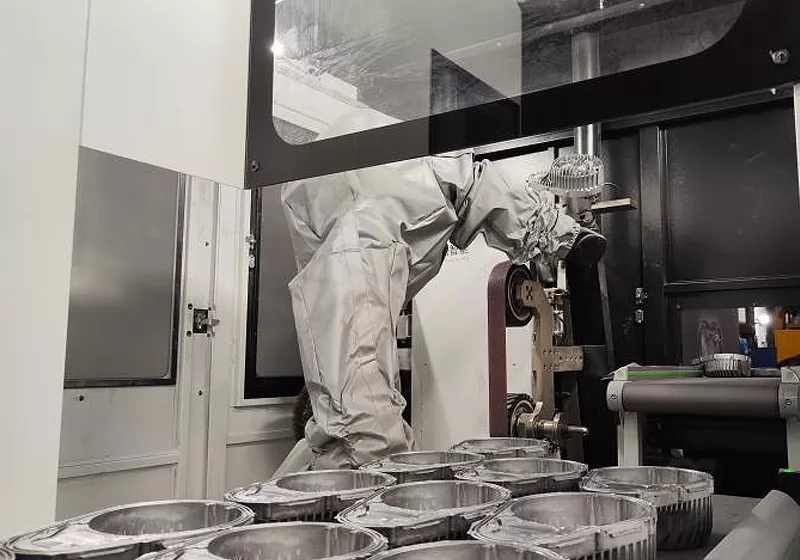
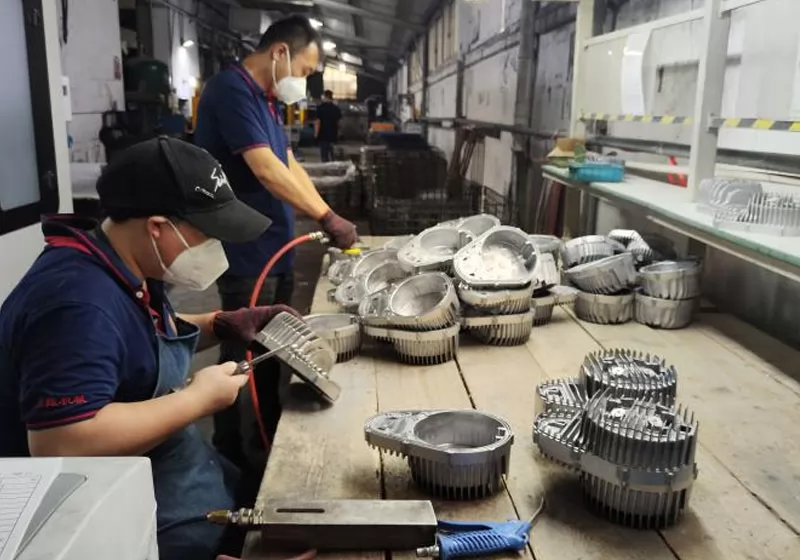
The entire development process was a systematic procedure of identifying and controlling quality risks while continuously optimizing the process. The heavy equipment work light housing project team leveraged rich experience and solid technology to conduct technical reviews and repeated verification at every process step, systematically identifying and tackling potential risk points. The team strictly adhered to the IATF 16949 quality system, implementing the full APQP process requirements to achieve full-process quality control. Throughout the process, various standardized documents and practices such as FMEA, SPC, MSA, and Control Plans were established and executed to prevent potential process risks, quality risks, and control quality variation. Finally, PPAP documentation was established and approved by the customer, laying a solid foundation for formal mass production.
The process included first-article inspection, in-process inspection, and outgoing inspection, establishing complete inspection data retention to ensure all quality data is traceable and verifiable.
Finished Product Metrics:
1. Dimensional tolerances meet ISO 2768-mK, minimum flatness 0.1, parallelism 0.1, all meeting standard requirements.
2. Surface quality: 0 defects, qualified.
3. Corrosion resistance test: Salt spray 240 hours, passed.
3. PPAP completed and approved by the customer.
The development of this aluminum die-cast construction machinery work light housing project by Innovaw, characterized by its high technical difficulty and stringent comprehensive performance requirements, served as a significant test of the manufacturer's overall capabilities. Relying on our profound expertise in high-pressure die casting, precision CNC machining capabilities, and an excellent quality management system consistently implemented throughout the process, we successfully overcame various challenges and delivered a high-quality product on time that met and even exceeded customer expectations. This project fully demonstrates our casting development team's professional capability for systematic problem analysis and efficient closed-loop improvement in developing complex structural components.
Mould making→Melting→High Pressure Die Casting→Cutting the sprue and riser→Polishing→Deburring→Shot Blasting→Machining1→Machining2→Powder coating→Packaging & inspection
We ask for 3D models or detailed 2D drawings. Samples may also be provided for pricing purposes. Please also provide specific details such as the product quantity, annual demand, raw materials, and dimensional tolerances. We accept 3D models in .PRT and .SLDPRT formats, as well as neutral formats such as .IGS, .STP, and .X_T.
100
Because the customer's product demand and complexity is different, need to use different die-casting or casting process, so the delivery time is not the same, we will be with the customer before booking the contract for delivery time confirmation. tooling lead time: 5-8weeks according to different parts; first samples lead time: 1-3weeks after tooling ready. mass order lead time: 5-7weeks
we will use 8D tool to process customer's complaint, define root cause and improvment actions.
